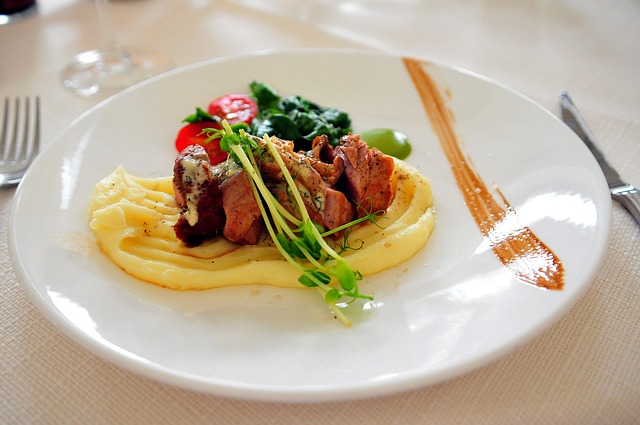Picture this: The easy way to size up food

As I’ve explained in previous newsletters, honoring both your hunger and fullness is the best way to determine when to eat, or stop eating. But how do you decide how much to put on your plate to start? If you, like so many, could use some gentle guidance on how much to eat, having a mental picture of the portion size of a few typical foods just might help.
Portion visualization is actually a simple trick: Link your mental image of a healthful portion of a food to a common object of about the same size and shape.
I use this visual portion control method myself! With a bit of practice, eyeballing what a sound, nutritious amount should look like on my plate has become second nature.
Of course, finding a balance among the different food groups is the ultimate nutritional goal, but I often hear from my patients and clients that questions of how much to allow—especially among “caution foods”—can be troubling. How about we simplify smart choices? Next time you walk down a buffet line, keep these handy portion-size guidelines in mind—and walk away from that meal feeling satisfied, not overstuffed.
- Baked potato: Picture your computer mouse. That’s the ideal portion. Even better: Choose a sweet potato, which has more vitamin A and C than a white potato.
- Pasta: Imagine half of a baseball. That same half-baseball is appropriate for grain portions, too.
- Muffin: Visualize a tennis ball. Really! Bagels, like muffins, are generally much larger these days. For correct portion, picture a hockey puck—yes, just one half of that bagel.
- Cheese: One portion is equal to 4 dice. That’s about it.
- Meat or fish: Picture a deck of cards, or compare to the palm of your hand.
- Berries: Imagine either a baseball or your fist.
- Peanut or almond butter: Visualize a golf ball.
- Rice: A light bulb is about the size of TWO portions.
- Oil: Picture one poker chip, or a stack of 4 dimes.
- Chips: A handful, right? Yes—which means around 5 large tortilla chips or 20 potato chips.
- Dessert (ice cream, etc): Imagine a half of a baseball.

Now, where does that all leave us? With a sensible plate! Now eat that “picture” slowly, then honestly assess whether you want more. For some, this is a good way to determine where a meal starts. For others, a portion is a good visual to know what’s enough, period. That’s always a choice: to stick with these amounts, or to have more. It’s important to remember that restriction and deprivation need not be part of any food plan,
And a sense of deprivation definitely is NOT a risk of the “eyeballing” method! I’m always amazed at the size of portions in a European country. They appear small at first to the American eye, but in fact I’m always satisfied with that amount of food. Compare that to here in the US, where a single restaurant order is typically enough for two or more persons. Yes, by all means, eat out with your friends—just keep portion reality in mind when your food arrives. If your plate holds more than you need or want, divide it and take your leftovers to go.
One bonus user-friendly way to adjust portions: Downsize from a dinner plate to a salad plate.It’s a healthful illusion: A sensible portion looks like so much more when served on a smaller plate, and you’ll most likely feel full on a lot less. Seeing is believing!
Information is power. Leave your food regrets, confusion, and indigestion behind, because now you have handy tools right with you wherever you go! Simply visualizing your portions this way can help you navigate any food situation, from your home kitchen to your next big social event, with the confidence, grace, and comfort you deserve.
A dedicated alternative health care practitioner, health and wellness coach, speaker, author, and licensed acupuncturist,
Roberta Mittman is the founder of the Park Avenue Center for Wellbeing. She serves the New York City area as well as those from around the world who connect with her for guidance to reach healthy, happy, and richly rewarding lives. Roberta specializes in guiding women over 40 to quickly and elegantly feel and look trim and vital so they have more time and energy to spend finding happiness, love, and abundance. Her magic: the perfect, holistic blend of East and West. A self-proclaimed chocolate enthusiast, she’s also the author of Ultimate Wellness: The 3 Mental Shifts You Can Use to Change the Course of Your Health Right Now.
Visit her web site: www.robertamittman.com/

